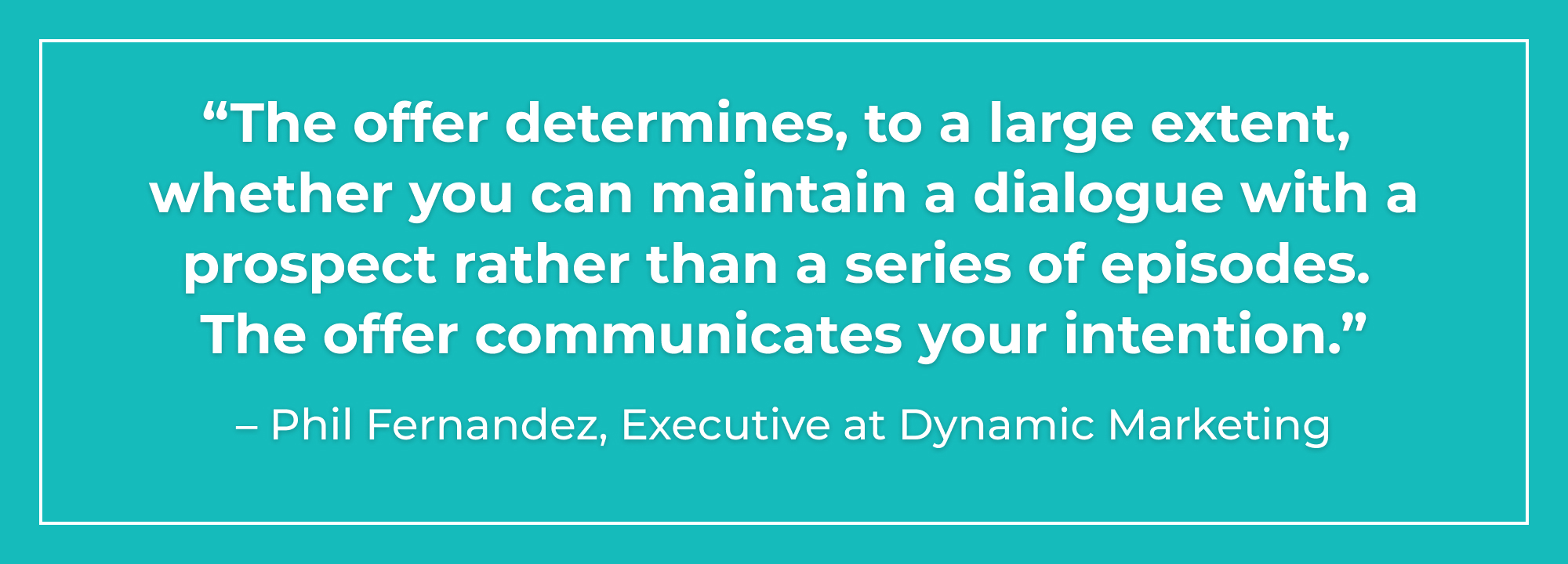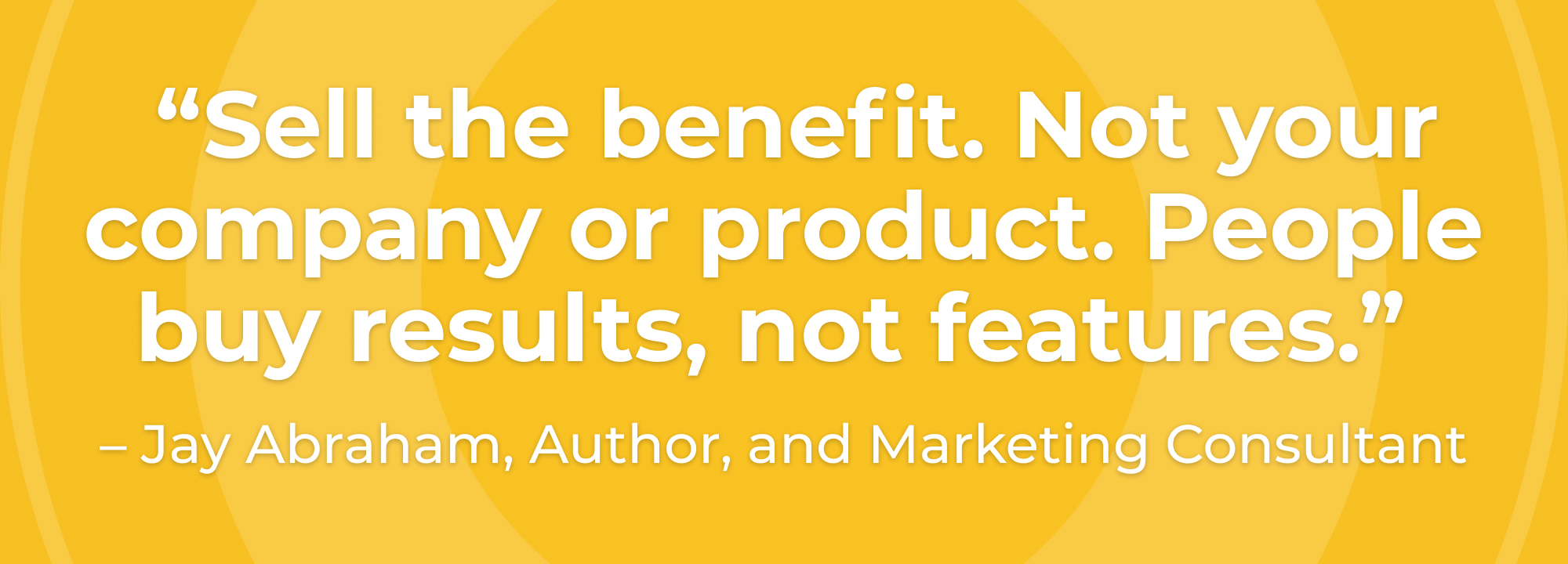Need fresh ideas for brand growth?
Subscribe to free insight emails
[Guide] Lead Generation for Healthcare
December 15, 2024

Lead Generation for Healthcare: A Radiant Marketing Guide
Lead Generation Guide Sections:
1. Introduction to Healthcare Lead Generation
2. Understanding the Healthcare Landscape
3. Defining Your Target Audience
4. Crafting Compelling Offers
5. Implementing Technology
6. Executing Strategies
7. Converting and Nurturing Leads
8. Measuring Success
9. Conclusion
>> Download the PDF here to read later! <<
Section One: Introduction to Healthcare Lead Generation
In an era where success in healthcare transcends mere transactions, effective lead generation emerges as a strategic cornerstone for marketing professionals and organizations alike. Navigating the nuanced landscape of healthcare marketing requires a comprehensive understanding of industry intricacies, compliance considerations, and the integration of cutting-edge technologies.
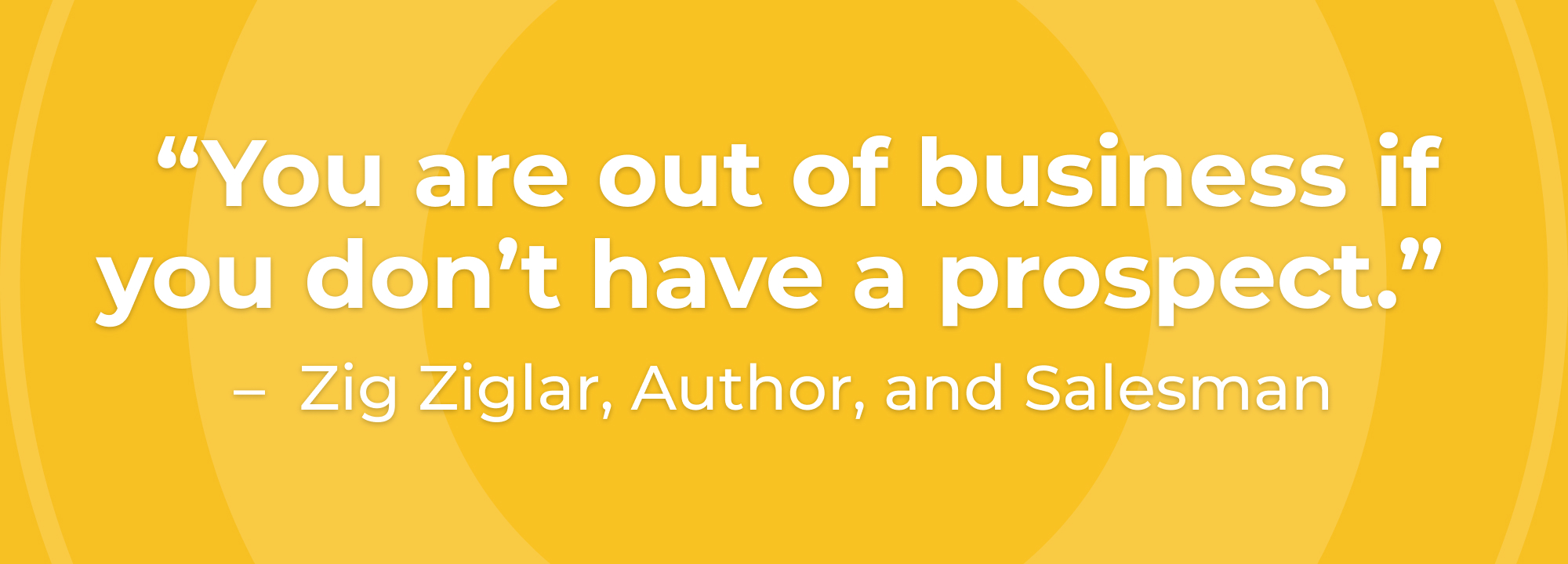
This guide, curated by the experts at Radiant Marketing, delves into the essence of lead generation for health brands, offering tailored insights for wellness companies, pharmaceutical and supplement brands, and healthcare service providers.
From the strategic crafting of compelling offers to the seamless integration of technology solutions, the guide is designed to empower healthcare brands with the knowledge and strategies needed to thrive in lead generation.
Lead Generation in Healthcare
Lead generation, in the context of healthcare, goes beyond the conventional concept of acquiring customers. It encapsulates the nuanced process of identifying and cultivating relationships with individuals and organizations that can benefit from healthcare products or services.
In the digital age, where information is abundant and choices are vast, healthcare brands need to navigate through the noise to reach their ideal audience. From attracting prospective patients or clients to engaging with B2B partners, understanding the intricacies of healthcare lead generation is pivotal for sustained success.
Importance of Effective Lead Generation for Healthcare Businesses
A recent study revealed that 91% of marketers say that lead generation is their most important goal, and for a good reason.
Effective lead generation serves as the lifeblood for healthcare businesses, playing a pivotal role in sustaining growth, fostering innovation, and driving positive patient outcomes. Beyond the traditional focus on transactions, healthcare lead generation encompasses building meaningful connections, fostering trust, and delivering value to both B2B and B2C audiences.¹
For healthcare service providers, successful lead generation can translate into a fuller appointment schedule, enhanced patient loyalty, and a positive impact on public health. In the case of pharmaceutical and supplement brands, it goes beyond selling products; it involves educating and empowering consumers and providers to make informed decisions about individual well-being.
In a landscape where reputation is paramount, and the healthcare consumer is more discerning than ever, the ability to generate leads effectively is a competitive advantage that distinguishes thriving healthcare brands from the rest.
Emerging Technologies and Resulting Consumer Behavior Shifts
The healthcare industry is on the cusp of numerous transformative technological advancements, and understanding these shifts is integral to staying ahead in your lead generation effectiveness.
Artificial intelligence, data analytics, and automation are becoming indispensable tools in identifying and targeting potential patients, clients or partners.
Moreover, anticipating changes in consumer behavior based on technological shifts is crucial for crafting strategies that resonate with the evolving expectations of healthcare audiences. From the rise of telehealth services to the increasing emphasis on preventive care, healthcare brands need to align their lead generation efforts with the changing dynamics of consumer preferences.
Section 2: Understanding the Healthcare Landscape
A. Current Trends in Lead Generation for Healthcare Marketing
In the rapidly evolving realm of healthcare lead generation, staying abreast of current trends is imperative. A proactive approach to understanding and leveraging these trends to enhance your lead generation strategies.
Current lead generation strategies and trends include:
-
- Personalized Content and Engagement: Tailoring content and engagement strategies based on individual patient or client profiles is gaining prominence. Personalization fosters a sense of connection and relevance, contributing to higher engagement and conversion rates.2
For example, Sharecare creates customized health and wellness plans for individuals based on their health risk assessments. Their content and coaching adapt as the user’s needs and goals evolve.
“As a content strategist, I’ve witnessed the impact of personalized healthcare content on lead generation,” Lauren Karwoski, Radiant Content Strategist, shared. “Adapting our strategies to fit individual profiles not only strengthens connections but also boosts engagement and conversion rates. It’s not just a passing trend; it’s a crucial element for success in today’s ever-changing healthcare landscape, and the integration of AI capabilities will only accelerate its importance.”
-
- Telehealth Integration: The surge in global telehealth services has reshaped the healthcare landscape, and lead generation strategies must adapt to this transformation. Embracing approaches that integrate telehealth, virtual consultations, and remote patient engagement is proving to be a highly effective strategy for generating leads in the healthcare sector.3
Doctor on Demand is a great example of this, partnering with major health plans and employers to offer video visits with psychiatrists, psychologists, and other licensed healthcare professionals. Appointments can be made quickly on a user-friendly platform.
-
- Data-Driven Decision-Making: Harnessing the power of data analytics allows healthcare brands to make informed decisions. By understanding patient behaviors, preferences, and demographics, brands can optimize their lead generation efforts for maximum impact.2
Companies like Devoted Health draw on individual health data and AI to guide health plan design and personalized recommendations. Their emphasis on data helps improve care while reducing costs.
-
- AI’s Role in Personalization at Scale: Artificial Intelligence (AI) is revolutionizing healthcare lead generation by enabling unparalleled personalization at scale. Through advanced algorithms, AI tailors content and messaging to individual preferences, ensuring a more targeted and effective approach to reaching potential leads. Additionally, AI facilitates extensive testing of content and lead generation strategies, allowing for the seamless experimentation of ad variations at scale, ultimately optimizing campaigns for maximum engagement and conversion.
-
- Real-time Engagement with AI-Powered Bots: Leveraging AI, live chat bots are transforming healthcare lead generation by providing real-time engagement. These bots can instantly respond to inquiries, answer questions, and guide potential leads through the initial stages of the healthcare journey. This not only enhances user experience but also significantly reduces the need for human resources to monitor and respond to every query. The cost-effective nature of AI-powered live chat bots makes them a valuable asset in efficiently managing and nurturing leads.
B. Unique Challenges and Opportunities in Healthcare Lead Generation
Navigating the healthcare landscape presents both challenges and unique opportunities for lead generation. Recognizing and addressing these factors is crucial for developing effective strategies.
-
- Trust Building: Establishing trust is a prolonged process in healthcare. Brands must prioritize transparency, authenticity, and consistent communication to build and maintain trust with their audience.
-
- Long Sales Cycles: Healthcare decisions, whether B2B or B2C, often involve complex considerations and extended sales cycles. Lead generation strategies need to be patient- or user-centric and adaptable to longer decision-making processes.4
This process can be seen at Philips Healthcare, where extensive time is dedicated to understanding needs of health systems and hospitals before pitching solutions. They maintain engagement over long sales cycles spanning proposal, procurement, and post-purchase.
-
- Cross-Sector Collaboration: B2B lead generation in healthcare often involves collaboration across sectors. Effective networking and relationship-building with other healthcare entities can open doors to valuable partnerships.5
Ochsner Health System does this by frequently partnering with government entities, community organizations, payers, life science companies, and digital health startups to co-develop programs benefiting public health.
C. Compliance and Regulatory Considerations
The healthcare industry is governed by regulations and compliance standards, making it imperative for lead generation strategies to align with these requirements including:
-
- HIPAA Compliance: Any strategy involving the collection, storage, or transmission of patient data must adhere to the Health Insurance Portability and Accountability Act (HIPAA) regulations to ensure the privacy and security of sensitive health information.6
-
- Advertising Standards: Healthcare marketing is subject to strict advertising regulations. Ensuring that promotional materials meet the standards set by regulatory bodies is essential to avoid legal repercussions.7
-
- Informed Consent: Clearly communicating the purpose of data collection and obtaining informed consent is crucial.7 Transparency builds trust and demonstrates a commitment to ethical practices in lead generation.
D. Ensuring Ethical Practices in Healthcare Lead Generation
Ethical considerations are paramount in healthcare lead generation to maintain the integrity of the industry and brand, and build lasting relationships.
It’s important that your brand is advocating for the following ethical practices:
-
- Transparent Communication: Clearly communicate the purpose of data collection, how it will be used, and obtain consent from individuals. Transparency fosters trust and ensures compliance with ethical standards.8
GeneHealth Analytics excels in transparent communication by clearly articulating the purpose of data collection and outlining its usage in their privacy policy. They prioritize obtaining consent from individuals, fostering trust and ensuring compliance with ethical standards.
-
- Respecting Privacy: Prioritize the privacy and confidentiality of patient or client information through email, text and other communications. Implement robust security measures to safeguard sensitive data and adhere to relevant privacy regulations.8
Epic Systems is vigilant about safeguarding patient health information, securing records with role-based access and encryption to ensure privacy.
-
- Educational Marketing: Focus on educating your audience rather than employing aggressive sales tactics. Providing valuable information in a desire to educate your audience (rather than solely sell your product) establishes your brand as a trusted source of knowledge in the healthcare space.
Johnson & Johnson takes an education-first, product-second approach in promoting new health solutions, focusing on raising awareness rather than aggressive sales.
By understanding the intricacies of the healthcare landscape, including current trends, challenges, and ethical considerations, healthcare brands can lay a solid foundation for successful lead generation.
Section 3: Defining Your Target Audience
To maximize the effectiveness of healthcare lead generation, it is imperative to have a deep understanding of your target audience. This involves a process of defining your audience and tailoring strategies to resonate with their needs and preferences.
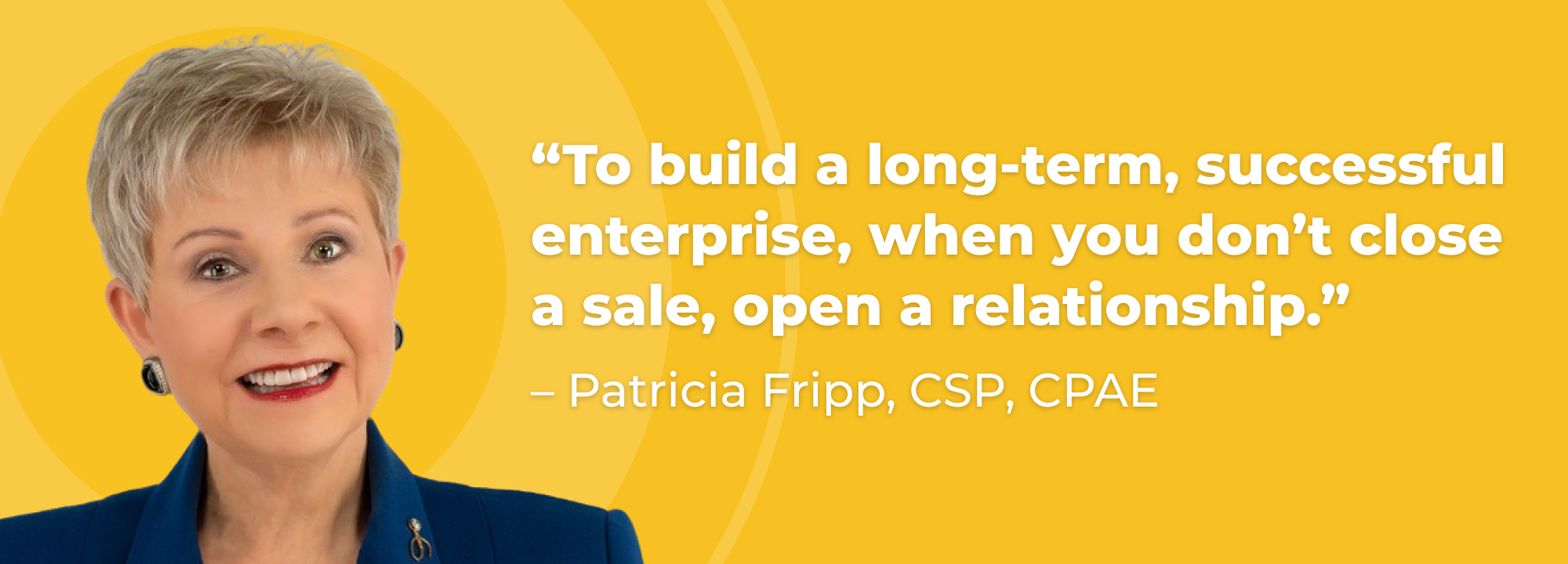
A. Defining Ideal Buyer Personas
Whether you’re generating consumer or business leads, defining your ideal audience and creating an ideal client profile is a critical first step in understanding how to effectively target and convert the most fruitful prospects.
-
- Comprehensive Demographic and Firmographic Analysis: Kickstart your strategy with a thorough examination of both demographic and firmographic data. Identify key characteristics of your ideal buyers or patients by considering factors such as age, gender, location, income, and occupation for detailed buyer personas.
In addition, leverage firmographic data, encompassing information like geographic area, number of clients, type of organization, industry, and technologies used. This dual approach ensures a comprehensive segmentation of both individual buyers and organizational entities, providing a more nuanced understanding of your target audience.9
-
- Healthcare Pain Points: Understand the specific healthcare pain points your audience experiences and you seek to solve. Whether it’s managing chronic conditions, seeking preventive care, or accessing specialized treatments, align your lead generation strategies with addressing these concerns.
-
- Behavioral Insights: Delve into the behavioral aspects of your audience. Analyze online behaviors, preferences, and decision-making patterns to tailor your approach and engage with them at the right touch points, ideally in the micro moments of decision-making.
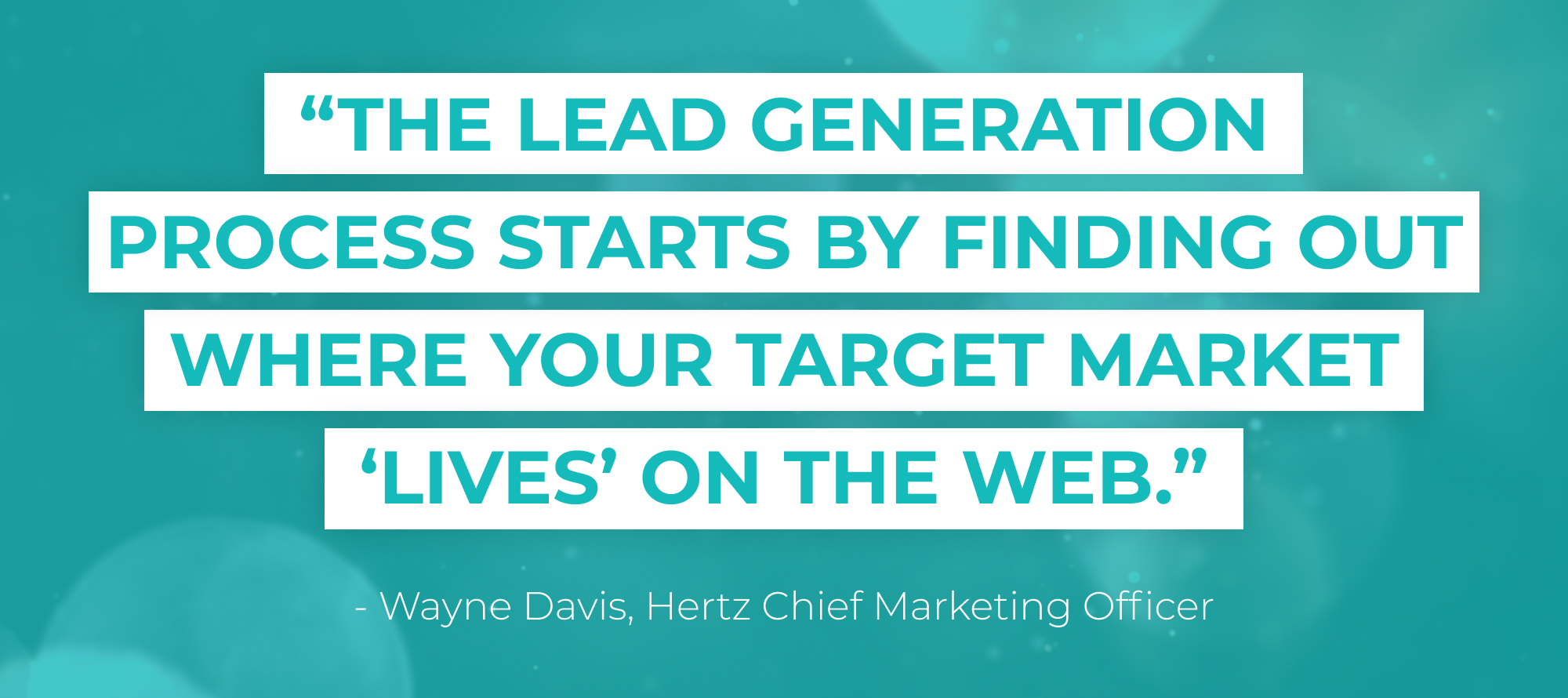
B. Tailoring Strategies to Audience Segments
-
- Segmentation for Personalization: Once buyer personas are established, segment your audience into groups based on shared characteristics. This segmentation allows for personalized strategies that resonate more deeply with each segment.
-
- Customized Messaging: Craft messaging that speaks directly to the unique needs, goals and preferences of each audience segment. Tailor content to address specific healthcare concerns and position your brand as a value and solution provider.
-
- Platform-Specific Approaches: Different audience segments may prefer distinct communication channels. Tailor your lead generation strategies to be platform-specific, whether it’s through social media, email campaigns, or targeted advertising.
-
- Target Account List (ABM): Implement Account-Based Marketing (ABM) principles by creating a target account list with Tier 1-3 categorization based on fit and priority. Tailor messaging accordingly to ensure a personalized and effective approach for each tier.
C. Mapping the Buyer’s Journey
Understanding and mapping the buyer’s journey is essential for crafting targeted and effective marketing strategies that guide individuals seamlessly from initial awareness to final conversion. The buyer’s journey is a strategic framework that outlines the stages and touchpoints a prospective customer goes through before making a purchasing decision.
-
- Awareness Stage: At the awareness stage, potential clients or patients are identifying a need or problem. Craft content that educates and raises awareness about healthcare issues, positioning your brand as a valuable resource.
-
- Consideration Stage: During the consideration stage, individuals are researching solutions. Provide in-depth content, such as whitepapers, case studies, product/service or expert articles, to showcase your expertise and build credibility. While some brands may be hesitant to make direct competitor comparisons, when you know that your prospects are doing this either way, offering a ‘product comparison guide’ or similar tool during this stage can be incredibly helpful in better controlling that narrative.
-
- Decision Stage: In the decision stage, prospects are evaluating specific healthcare solutions. Implement strategies such as personalized consultations, free trials, recorded demos, or exclusive offers to guide them toward choosing your brand.
Implementing tools like exit intent forms with special savings is a great way to capture an individual about to leave this decision stage without action.
- Decision Stage: In the decision stage, prospects are evaluating specific healthcare solutions. Implement strategies such as personalized consultations, free trials, recorded demos, or exclusive offers to guide them toward choosing your brand.
-
- Post-Decision Engagement: Post-decision engagement is vital for fostering loyalty and encouraging word-of-mouth referrals. Implement post-purchase communication, follow-up surveys, and ongoing educational content to maintain engagement and satisfaction and make recurring purchases and referrals easy.
By defining your target audience, creating detailed profiles, tailoring strategies to different audience segments, and mapping the buyer’s journey, healthcare brands can significantly enhance the precision and impact of their lead generation efforts.
Section 4: Crafting Compelling Offers
In the dynamic landscape of healthcare lead generation, the ability to craft compelling offers is a key driver of engagement and conversion.
To succeed, lead generation relies on:
-
- Advocating a strategic approach to developing value propositions
- Creating tailored offers
- Incorporating educational content to resonate with your target audience.
A. Developing Value Propositions
-
- Addressing Specific Pain Points: Craft a value proposition that directly addresses the unique pain points of your audience.
For example, Omada Health, a digital health company, emphasizes personalized care plans for individuals managing chronic conditions, simplifying their daily healthcare routines as seen in their slogan: “Simplify Your Diabetes Management with Omada Health’s Intuitive Health Tracking App.”
- Addressing Specific Pain Points: Craft a value proposition that directly addresses the unique pain points of your audience.
-
- Highlighting Differentiators: Clearly communicate what sets your healthcare brand apart and elucidate how these unique attributes directly address the distinct needs and concerns of your target audience, fostering a compelling narrative that resonates throughout the buyer’s journey.
Babylon Health, a telehealth service, emphasizes its differentiator, an AI-driven approach of providing users with personalized healthcare recommendations and consultations in their propositions.
-
- Emphasizing Patient Outcomes: Showcase real-world examples of positive patient outcomes resulting from your products or services.
Mayo Clinic, a renowned healthcare institution, does an excellent job of this, often sharing patient success stories to illustrate the tangible benefits of its medical expertise.
- Emphasizing Patient Outcomes: Showcase real-world examples of positive patient outcomes resulting from your products or services.
“The offer determines, to a large extent, whether you can maintain a dialogue with a prospect rather than a series of episodes. The offer communicates your intention.”
– Phil Fernandez, Executive at Dynamic Marketing
B. Creating Tailored Offers
-
- Segment-Specific Promotions: Tailor your offers to the specific needs of different audience segments.
Cleveland Clinic, for instance, offers personalized health screenings for various demographics, addressing the unique concerns of each group.
- Segment-Specific Promotions: Tailor your offers to the specific needs of different audience segments.
-
- Limited-Time Promotions: Create a sense of urgency by introducing limited-time promotions.
For example, Zocdoc, an online healthcare appointment booking platform, often offers limited-time discounts on virtual consultations to encourage users to schedule appointments promptly.
- Limited-Time Promotions: Create a sense of urgency by introducing limited-time promotions.
-
- Bundle Deals: Package complementary services or products together for enhanced value.
CVS Health, often provides bundled deals on health and wellness products, encouraging customers to explore a range of offerings.
- Bundle Deals: Package complementary services or products together for enhanced value.
C. Incorporating Educational Content
-
-
- Webinars and Workshops: By providing expert advice on relevant issues, a company can position themselves as an educational resource.
Cleveland Clinic regularly hosts webinars and workshops addressing prevalent healthcare topics such as heart health and stress management.
- Webinars and Workshops: By providing expert advice on relevant issues, a company can position themselves as an educational resource.
-
-
-
- Informative Blog Posts and Guides: By publishing and ungateing informative articles a company can educate their audience while also establishing the brand as a trusted source of healthcare knowledge.
-
Radiant Client, Copperstate Ob/Gyn, maintains a robust blog that covers a variety of health-related topics.
-
-
- Email Drip Campaigns: These campaigns can guide a company’s audience through topics like mental health or nutrition, nurturing leads toward healthier living.
-
Healthline, a health information website, often implements email drip campaigns delivering educational content over a series of emails.
-
-
- Live Online Social Events: Hosting live online events, such as cooking shows or interactive Q&A sessions, can create a dynamic platform for educating an audience.
-
Lifescape, a Radiant Marketing client, conducts a monthly live online cooking show, fostering an interactive and educational experience for their community.
By drawing inspiration from real-life healthcare brands and implementing these strategies, your healthcare brand can create a powerful magnetism that attracts and retains engaged audiences.
Section 5: Implementing Lead Generation Technologies
In the rapidly advancing landscape of healthcare lead generation, leveraging technology is pivotal for efficiency and effectiveness. Integration of cutting-edge solutions to streamline processes and enhance engagement is crucial for continued success.
“It is important to develop your full tech stack after assessing the needs of your marketing strategy as a whole,” Karen Cummings, Radiant CEO, advises, “You want to ensure that all of your tools work together, eliminate overlap and are able to provide you with the capabilities and analytics you need to make informed decisions.”
A. CRM Systems
CRM tools are designed to help businesses manage these relationships more effectively. Centralized access to customer data in one place contributes to improved day-to-day efficiency and deeper customer relationships by empowering personalized follow ups and segmented communications.13
Implementing Customer Relationship Management (CRM) systems, such as HubSpot, allows healthcare brands to manage patient or client interactions seamlessly.
Cleveland Clinic, among other healthcare brands, utilizes Salesforce Health Cloud to streamline patient interactions, ensuring personalized and efficient healthcare experiences.
These platforms provide a centralized hub for organizing and analyzing valuable data, facilitating personalized communication, and enhancing overall relationship management.
B. Marketing Automation
Automated lead generation is a combination of outbound and inbound marketing solutions that are powered by various softwares, AI tools and machine learning.
Marketing automation platforms, like HubSpot, empower healthcare brands to automate repetitive marketing tasks, nurture leads, and deliver personalized content at scale.
Mayo Clinic is just one of many healthcare brands that utilizes HubSpot to automate email campaigns, delivering relevant content to patients at various stages of their healthcare journey. By automating workflows, healthcare marketers can focus on strategic initiatives, ultimately improving lead generation efficiency.
C. AI for Lead Generation
Artificial Intelligence (AI) plays a pivotal role in identifying and engaging potential leads. For instance, Babylon Health employs AI-driven chatbots like Conversica, to engage with potential patients, answering queries and guiding them through the initial stages of the healthcare journey. Conversica, an AI-powered assistant, engages with leads through natural language conversations, qualifying and nurturing them before handing them over to human agents.
By incorporating CRM systems, marketing automation, and AI for lead generation, healthcare brands can enhance their technological prowess, streamline operations, and elevate the overall efficacy of their lead generation strategies.3
Section 6: Executing Lead Generation Strategies
When it comes to executing strategies for lead generation, consider a strategic blend of digital channels, patient referral programs, and thought leadership initiatives to amplify your reach and impact.1
“As consumers ourselves, we’re intimately familiar with the intricate and complex journey we take leading up to a purchase,” Karen shares, “this understanding reinforces the importance of an omnichannel approach that encompasses the specific platforms and messages that address individuals in each step of the journey.”
A. Patient Referral Programs
Many B2B marketers acknowledge that referrals are their best channel for lead generation. Implementing patient referral programs can be a powerful way to leverage satisfied patients as brand advocates. These programs can incentivize patients to refer others, fostering a sense of community and trust.
Additionally, getting your best clients to refer likely means more of your ideal-fit clients.
B. Thought Leadership
Establishing thought leadership in the healthcare space positions your brand as a trusted authority. Radiant Client, Lifescape, exemplifies this by regularly publishing insightful content, contributing to their reputation as a reliable source of healthcare information. Lifescape providers are also active as board members and keynote presenters with local organizations such as Healthy LifeStars and MASK Matters, to remain prominent in areas and topics that are relevant to the work they do.
By strategically implementing patient referral programs and establishing thought leadership, healthcare brands can forge strong connections with their audience, drive engagement, and foster lasting relationships.¹
Section 7: Nurturing & Securing Leads
As you navigate the critical phase of converting and nurturing leads in healthcare lead generation, it’s important to have a focus on building trust, implementing lead scoring, and ensuring continuity of care.¹
Prioritize building trust throughout the healthcare journey. Healthgrades, a healthcare provider rating and comparison website, exemplifies this by offering transparent patient reviews and ratings, contributing to a culture of trust between patients and providers.
B. Lead Scoring and Qualification
Implementing lead scoring and qualification systems, allows healthcare brands to prioritize and focus efforts on leads that are most likely to convert. By assessing engagement and behavior, brands can tailor their approach for maximum impact.15
Many CRM and marketing automation softwares provide lead scoring that enable healthcare brands to identify and prioritize leads based on engagement and behavior, optimizing the conversion process.
C. Continuity of Care
Ensuring continuity of care is crucial for maintaining patient engagement.15 Epic Systems, a provider of health information technologies, facilitates this by offering integrated electronic health records (EHR) that streamline communication among healthcare providers for a seamless patient experience.
By focusing on building trust, implementing lead scoring, and ensuring continuity of care, healthcare brands can enhance the conversion and nurturing process, fostering long-term relationships with patients or clients.15
Section 8: Measuring Lead Generation Success
In the dynamic landscape of healthcare lead generation, measuring success is an essential, ongoing process. A comprehensive approach involving key performance indicators (KPIs), analytics tools, and data-driven strategy adjustments will help ensure sustained success.
A. Key Performance Indicators (KPIs)
Identifying and tracking key performance indicators is crucial for gauging the effectiveness of your healthcare lead generation efforts. Examples of relevant KPIs include visitor-to-lead conversion rates, lead and customer acquisition costs, and the lifetime value of a client or patient.
B. Analytics Tools
Utilizing robust analytics tools is instrumental in gaining insights into user behavior and campaign performance. Google Analytics is a free and widely-used tool in healthcare, offering in-depth data on website traffic, user interactions, and conversion metrics. Leverage Google Analytics to analyze website traffic and user behavior, optimizing your online presence based on data-driven insights.
Other tools to consider include SEO tools such as Search Console, Screaming Frog or Moz to better understand how you’re ranking for target terms and how you’re then driving visitors and new leads from that visibility.
C. Adjusting Strategies Based on Data
The power of data lies in its ability to guide strategic decisions. Implement a continuous feedback loop by analyzing data and adjusting strategies accordingly. If certain channels or campaigns are underperforming, consider reallocating resources to high-performing areas. For example, adjust content strategies based on audience engagement data, ensuring that your health information remains relevant and impactful.
By consistently monitoring KPIs, employing analytics tools, and adjusting strategies based on data insights, healthcare brands can optimize their lead generation efforts for continual improvement.
Section 9: Conclusion
In summary, this guide has underscored the multifaceted nature of healthcare lead generation, emphasizing the importance of a holistic approach tailored to the industry’s unique challenges. Crafting compelling offers, integrating technology, and executing strategies strategically have been explored through real-life examples.
As you navigate the intricacies of healthcare lead generation, remember the pivotal role of building trust, leveraging data for decision-making, and maintaining continuity of care. These factors, exemplified by leading healthcare brands, contribute to successful conversion and nurturing of leads.
The journey doesn’t end here. Radiant Marketing encourages a commitment to continuous improvement. Stay agile, adapt to evolving trends, and embrace emerging technologies to ensure your healthcare brand remains at the forefront of lead generation in this dynamic industry.
Partner With Radiant Marketing for Lead Generation
At Radiant Marketing, we stand as dedicated partners for innovative and purpose-driven health and wellness brands seeking to carve their niche in the digital landscape. With over a decade of experience specifically in the health and wellness industry, we bring a wealth of expertise, time-tested strategies, and a commitment to efficient implementation.
By choosing to collaborate with us, you’re not just embarking on a marketing endeavor—you’re ensuring that your brand story is heard and resonates powerfully with your audience. Our track record speaks for itself, with clients witnessing tangible improvements in website visitor quality, inbound leads, lead acquisition costs, and enhanced lead-to-customer conversion rates.
Our approach is proven, focusing on creating awareness, cultivating engagement, and driving conversions to foster sustainable growth for your brand. When you partner with Radiant Marketing, you’re not just getting marketing; you’re getting a tailored strategy crafted for your unique story and goals.
Let’s start the journey toward transformative growth with a personalized Discovery Call—because your success is our mission.
This post was originally published in February 2024.
References
- https://6sense.com/guides/lead-generation-strategy/
- https://www.ventureharbour.com/lead-generation-trends/
- https://get.nice.com/
- https://www.sandler.com/blog/time-competitive-advantages-long-sales-cycle/
- https://www.apha.org/
- https://www.proofpoint.com/
- https://www.healthcarecompliancepros.com/blog/what-is-regulatory-compliance-in-healthcare
- https://www.knbcomm.com/blog/
- https://www.marketingevolution.com/marketing-essentials/target-audience
- https://www.semrush.com/blog/target-audience/
- https://blog.hubspot.com/service/customer-journey-map
- https://revenuegrid.com/blog/
- https://www.bigcontacts.com/blog/lead-generation-for-small-business-crm/
- https://popupsmart.com/blog/lead-generation-automation
- https://www.salesmate.io/blog/lead-generation-vs-lead-nurturing/
- https://dashthis.com/blog/top-5-most-used-kpi-for-lead-generation/

